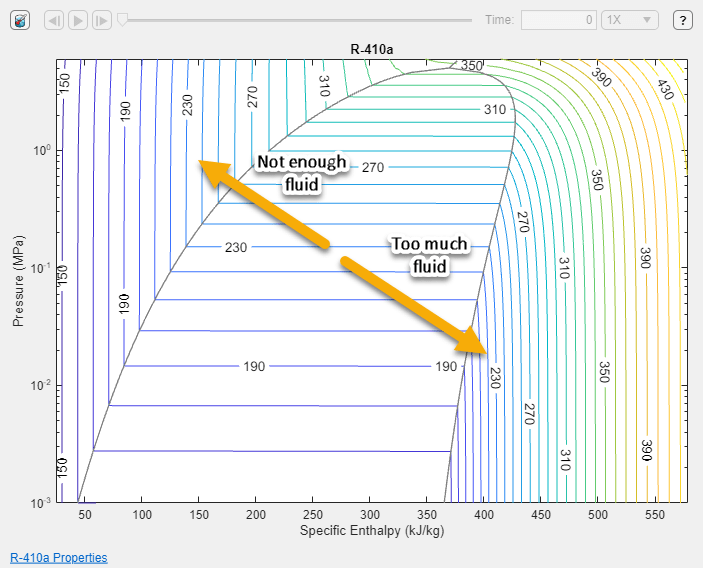Considerations for Microchannel Heat Exchangers
Because microchannel heat exchangers feature fluid channels with very small diameters, which substantially increases the surface area-to-volume ratio, you must take special considerations when modeling them as part of a refrigeration cycle. When modeling a system with microchannel heat exchangers:
Your system requires a larger pump or compressor with respect to a traditional heat exchanger.
Because the fluid in these heat exchangers can undergo sudden phase change, you must to maintain enough fluid in the system to evaporate and allow energy transfer.
Pump and Compressor Size
In microchannel heat exchangers, the flow resistance typically increases nonlinearly with decreasing channel dimensions. As the channel size decreases, the flow experiences greater frictional effects due to the proportionally larger surface area in contact with the fluid. The presence of surface roughness further contributes to the flow resistance.
The relationship between flow resistance and surface area depends on various factors. Specific geometry and characteristics of the microchannels, as well as the fluid flow conditions, influence the flow resistance. Undersized equipment can lead to insufficient flow and inadequate heat transfer, while oversized equipment may result in excessive pressure drop and unnecessary energy consumption.
To determine the suitable capacity for the pump or compressor, consider the requirements of your system, such as the desired flow rate, pressure drop limitations, and heat transfer performance. Additionally, account for any variations in operating conditions, such as changes in fluid properties, temperature, and system configuration. Using an open-loop test harness and abstract flow sources such as the Mass Flow Rate Source (2P) block can help you determine capacity while minimizing complexity. To learn more, visit Model a Refrigeration Cycle.
P-h Diagram Drift
P-h diagram drift is when the operating points drift while the system is operating in steady-state. P-h diagram drift occurs when you close the refrigeration loop and is an indication of either excessive or insufficient fluid in the system. If your system does not contain enough fluid, the operating point drifts to the upper left. If your system contains too much fluid, the operating point drifts down and to the right.

To control the charge density of the system, use Constant Volume Chamber (2P) blocks. Add the block to one or both sides of the heat exchangers to represent the inlet or outlet manifolds. Placing constant volumes around the evaporator prevents evaporator dry out, and placing constant volumes around the condenser prevents condenser flooding. These volumes physically represent the manifolds of the heat exchanger.
Your system should remain in vapor liquid equilibrium during the system startup, which means the operating point remains under the p-h diagram curve. You must initialize the system at realistic temperatures. The system may also start to drift when off or running slowly.